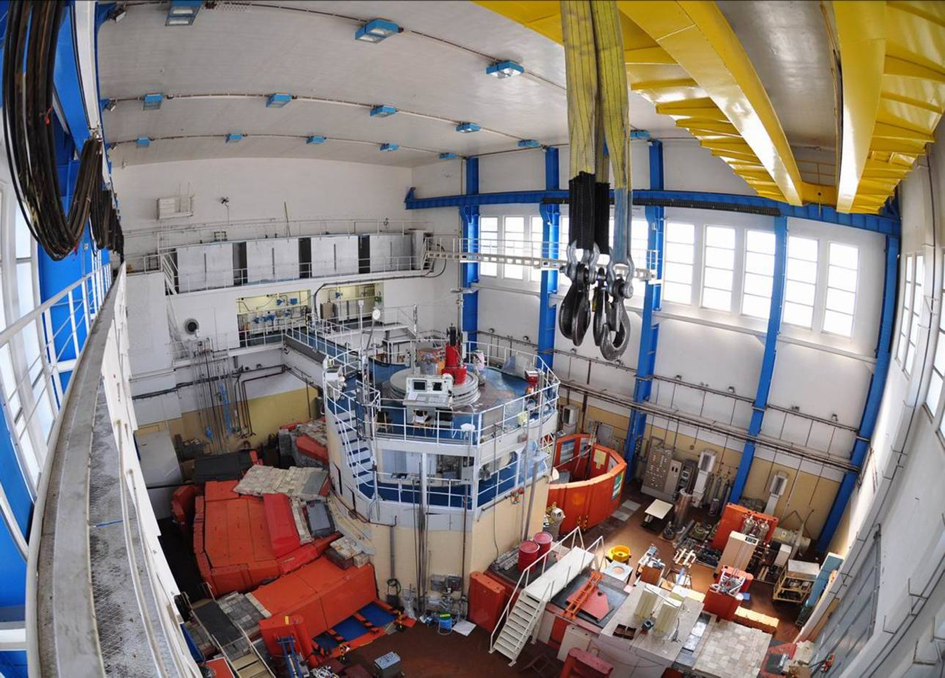BNC
BNC
One of the key and largest research infrastructures in Hungary is the 10 MW Budapest Research Reactor (BRR) with its experimental stations. This is the base for the domestic and international user community to serve for exploratory and applied research in many fields of science and technology as well as for methodical developments in neutron beam and irradiation techniques.
The scientific utilization of the research reactor is coordinated and managed by the Budapest Neutron Centre (BNC), which is a consortium founded by academic institutions in 1993. BNC is now a consortium of two research centres of the Hungarian Academy of Sciences: the Centre for Energy Research (MTA EK) and the Wigner Research Centre for Physics (Wigner RCP). BNC is legally represented by the Centre for Energy Research.
Science and technology at BNC
BNC is an open access facility for the domestic and international user community. A suite of reactor irradiation equipment, thermal neutron beam instruments and cold neutron spectrometers in the neutron guide hall are available and assisted by a professional team of scientists and engineers for experimental services. The 10MW BRR provides a maximum thermal and fast neutron flux of 2.2x1014n/cm2/s and 1x1014n/cm2/s, respectively. The reactor has eight radial and two tangential beam tubes. A cold neutron source provides long-wavelength neutrons to three guides hosting eight instruments. Altogether twelve instruments serve everyday user need in the reactor hall and in Guide Hall 1 and 2. Currently, two additional instruments are in advanced development phase.
The instrument development programme developed mostly thanks to national projects, such as the installation of the new reflectometer GINA, which was completed and entered in the user programme. The extension of the PGAA stations with neutron tomography option is a major advancement for a wider use of this successful technique.
BNC participates in several EU-supported programed, such as NMI3 (Integrated Infrastructure Initiative for Neutron Scattering and Muon Spectroscopy), IPERION CH (Cultural Heritage Science), C-ERIC (Central European Research Infrastructure Consortium, SINE2020 (Science and Innovation with Neutrons in Europe in 2020) and CHANDA (Solving Challenges in Nuclear Data). In the frame of these programmes, European scientists can get access to the BRR experimental facilities.
A partner in ESS instrumentation
In BrightnESS, BNC is involved trough the Wigner RCP in Work Package 4 (Detectors and Moderators) and Work Package 6 (Collaboration, Communication and Dissemination.)
Beside the BrightnESS contribution, both mentioned institutes are In-Kind contributiors to the NMX instrument at ESS: the Centre for Energy Research has a signed technical annex for the design of the shielding of the instrument and later the institute is interrested in delivering the shielding; the Wigner Institute delivers the chopper system (three slow (14Hz) choppers), the design of the guide system and the design of the control system. Wigner is also interested in delivering the guide system. Besides NMX, Wigner contributed to the proposal of Miracles backscattering instrument and also going to sign the MoU for the BIFROST instrument.

The Budapest Research Reactor (BRR) at BNC uses neutron beam lines for neutron scattering investigations.


 is funded by the European Union Framework Programme for Research and Innovation Horizon 2020, under grant agreement 676548.
is funded by the European Union Framework Programme for Research and Innovation Horizon 2020, under grant agreement 676548.